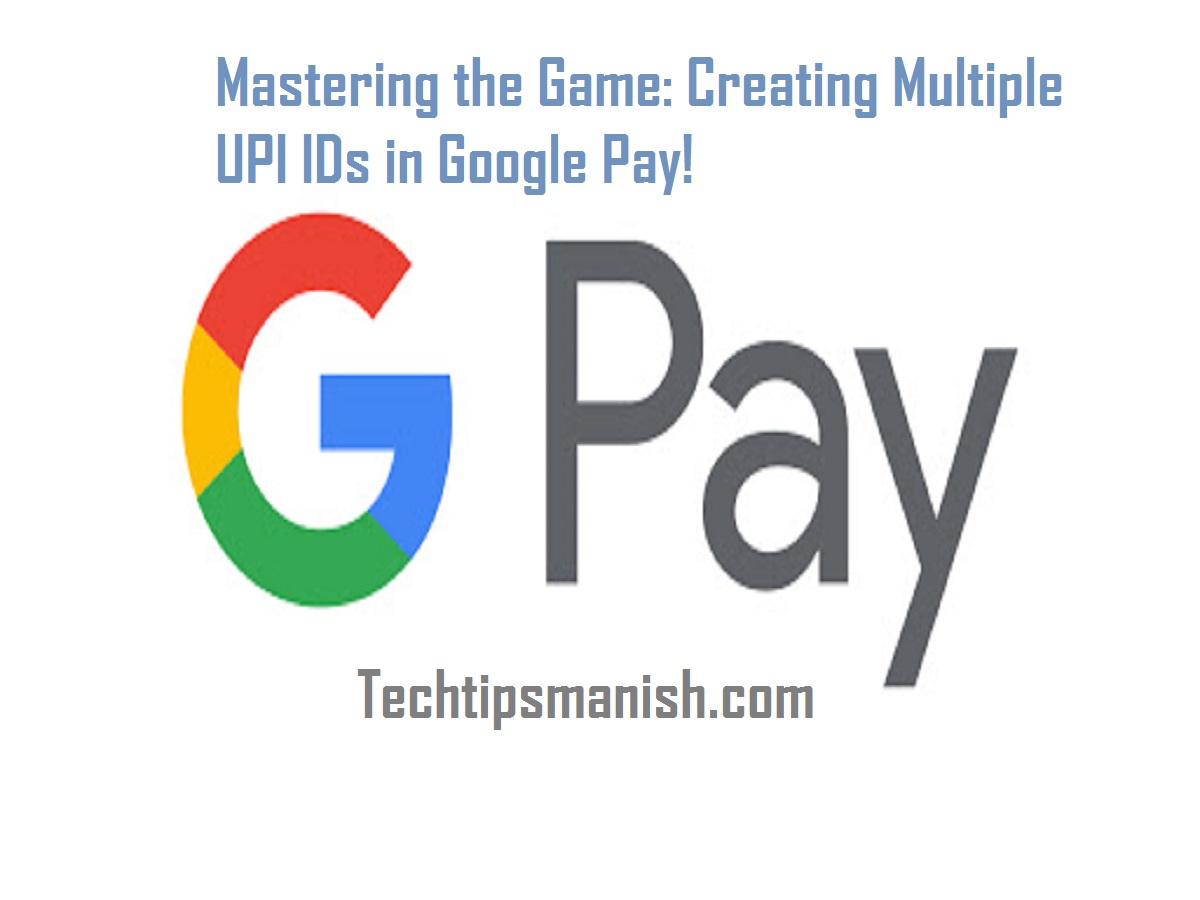Create Multiple UPI IDs in Google Pay: Dear readers, today we are going to discuss in detail about making multiple or more than one UPI ID in Google Pay. Believe me friends, it’s not that tough. The only thing you have to do is to see the points given below in this article, which will easily sort out your problem in making more than one UPI ID in Google Pay. But before that it would be nice, if we know a bit of it’s history.
Now talking about the use of internet or online payments in India, it had seen a tremendous growth in the last few years. As the term UPI is better known as Unified Payments Interface has become a favorite of people not only in India but across the world but it comes with different names and different companies.
In India there are various companies which provides UPI mode of payment platforms including Pay TM, PhonePe, Google Pay, Amazon Pay and many more on the list, if and only if we talk about India. Now as this article is about making multiple UPI ID in Google Pay, we will see it in details below…
Creating Google Pay Multiple UPI ID
We Indians are now a days habituated to use UPI ID, even when we go to a tea stall for dringking tea or making small purchases from vegetable vendors. Due to it’s availability in the current times, it is the most viable and easy source of payment. Typically, We Indian customers have a single UPI ID linked to multiple bank accounts, which facilitates faster transactions. Interestingly, users in India can add up to four UPI IDs for their bank accounts, and all these UPI IDs can be linked to a single bank account. This feature helps reduce delays or failures in payments and enhances payment success rates by routing user transactions through servers.
Google Pay, the UPI-based payment platform by Google, allows users to create their UPI IDs through payment service banks such as State Bank of India, HDFC Bank, Axis Bank, and ICICI Bank. If you wish to create another UPI ID in Google Pay, you can follow these steps.
Here comes the answer to make more than one UPI ID in Google Pay.
- Open the Google Pay app on your phone.
- Sign in to your Google Pay account.
- Tap on your profile in the top right corner of the app.
- Select the bank account for which you want to add a new UPI ID.
- Tap on “Manage UPI ID” from the drop-down menu.
- Select the plus icon next to the UPI ID you want to create.
- Choose the account to pay with that UPI ID.
By following these steps, you can easily create additional UPI IDs in the Google Pay app. You can even use words instead of numbers for your UPI IDs, for example, “xxxxxxxxxx@sbi” or your phonenumber@sbi.
Search your UPI ID in Google Pay
If you have already created multiple UPI IDs and can’t remember them, you can search for UPI IDs in Google Pay using the following steps.
- Open the Google Pay app.
- Tap on your profile in the top right corner.
- Choose your bank account.
- Select the bank account for which you want to view the UPI ID.
- Please note that under “Manage UPI ID”, you will find your UPI ID.
Conclusion:
Now concluding this article, dear friends you will get surprised to know that since its launch in 2016 as part of Digital India, UPI has seen remarkable growth in digital payments in India. According to the latest data shared by the National Payments Corporation of India (NPCI), the total number of transactions in India has crossed over 6600 crores. A new record has been created where the transactions has crossed the mammoth figure of Rs 14 lakh crore in March 2023 itself . Isn’t it’s an interesting figure friends.
Also read : Supercharge Your Browsing Experience with Google Chrome – The Ultimate Web Browser!”


